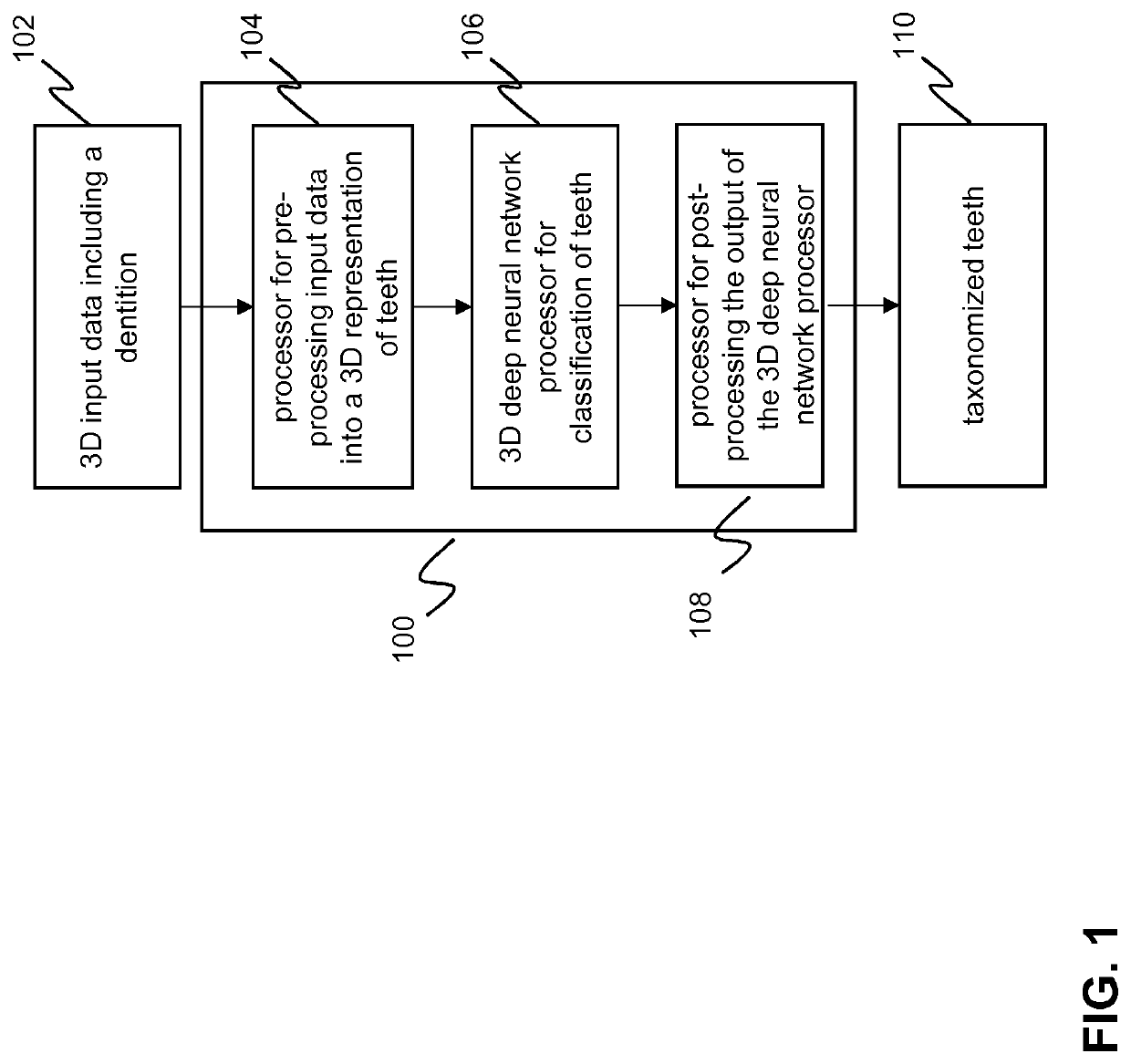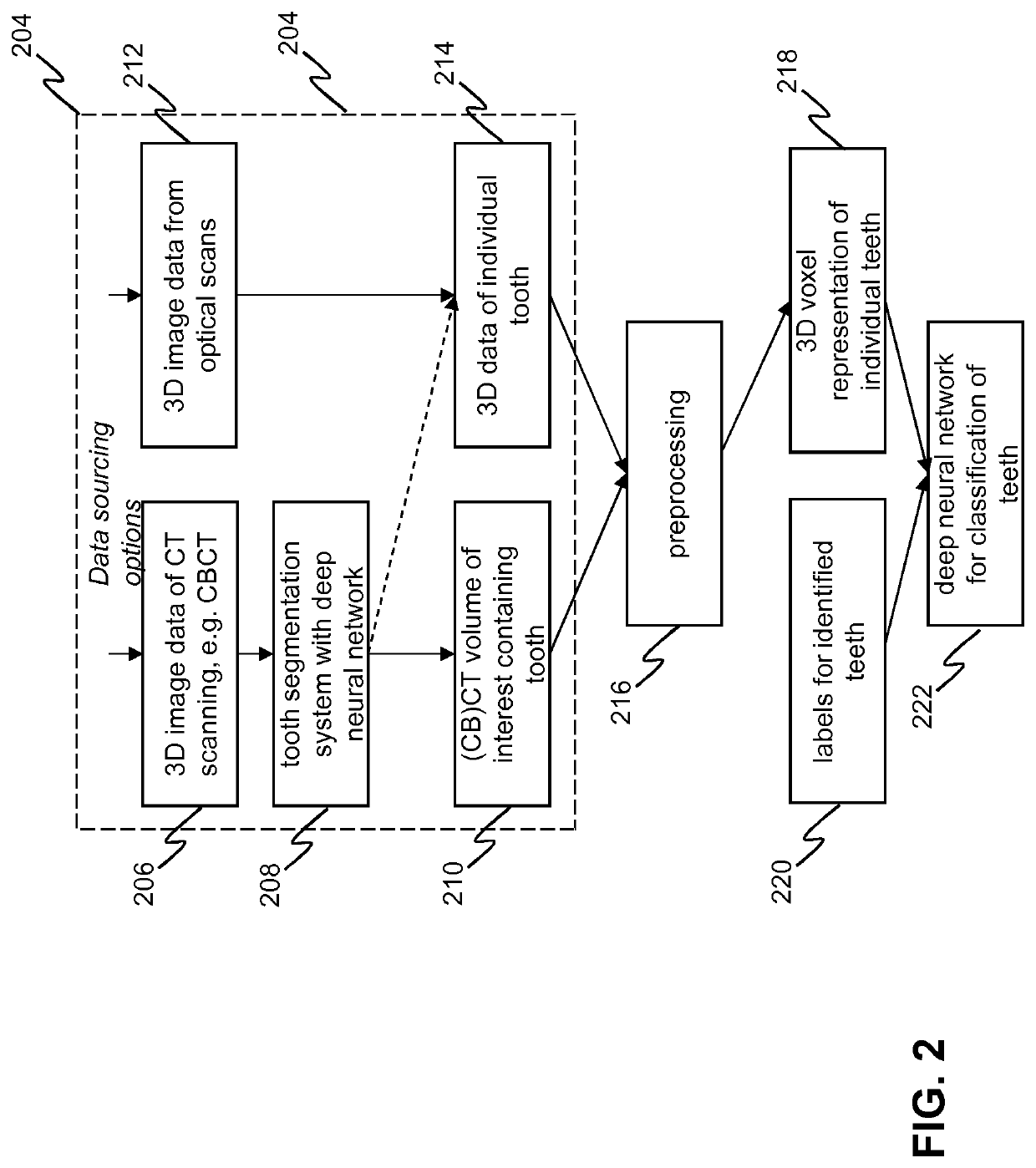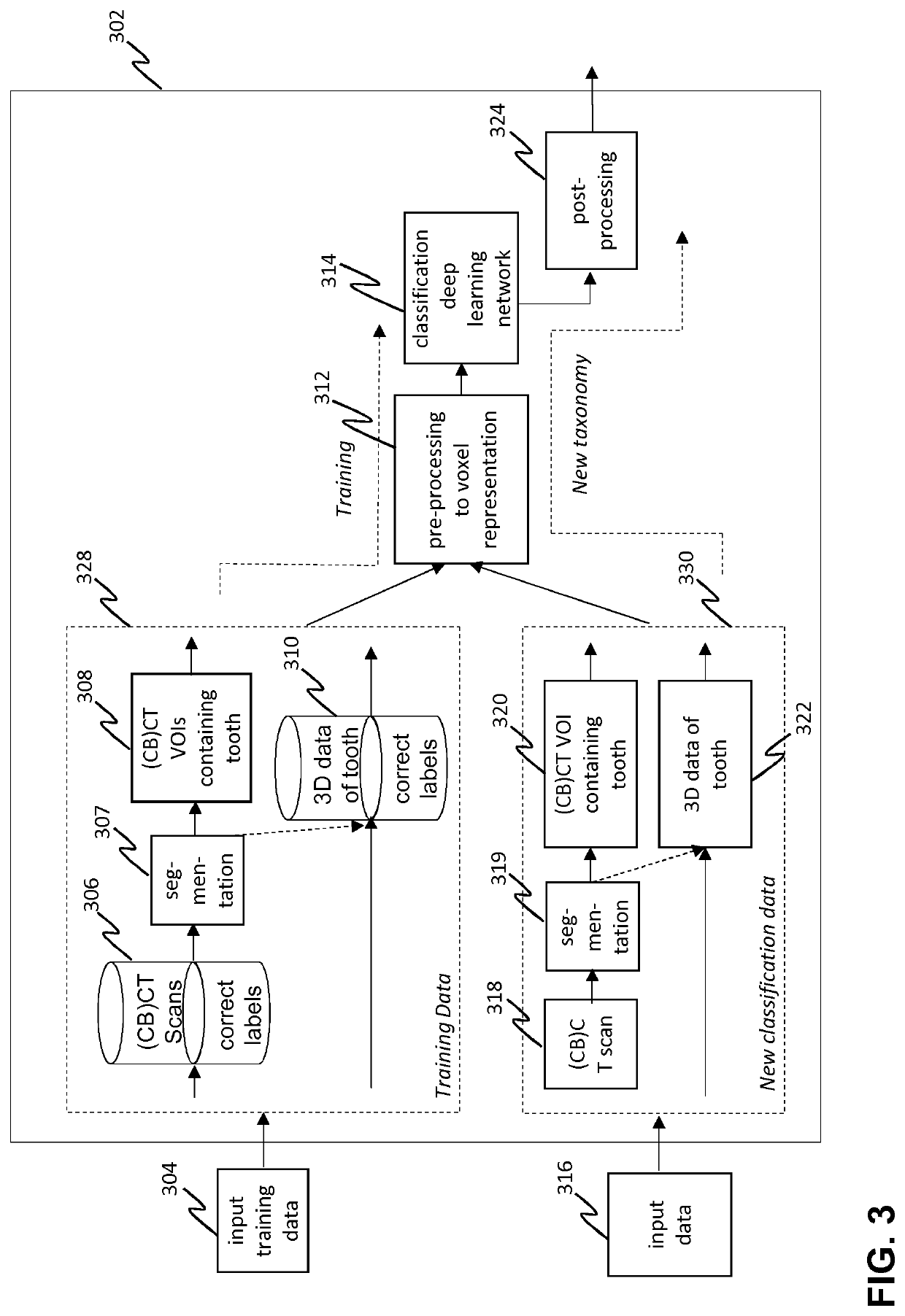Automated classification and taxonomy of 3D teeth data using deep learning methods
a technology of deep learning and automatic localization, applied in the field of automatic localization, classification and taxonomy of 3d teeth data using deep learning methods, can solve the problems of radio density, inability to process volumetric dento-maxillofacial images generated using cone beam computed tomography (cbct), and image analysis of cbct image data poses a substantial problem, so as to achieve accurate taxonomy of dentition
- Summary
- Abstract
- Description
- Claims
- Application Information
AI Technical Summary
Benefits of technology
Problems solved by technology
Method used
Image
Examples
Embodiment Construction
[0078]In this disclosure embodiments are described of computer systems and computer-implemented methods that use deep neural networks for classifying 3D image data representing teeth. The 3D image data may comprise voxels forming a dento-maxillofacial structure comprising a dentition. For example, the 3D image data may include 3D (CB)CT image data (as generated by a (CB)CT scanner). Alternatively, the 3D image data may comprise a surface mesh of teeth (as e.g. generated by an optical 3D scanner). A computer system may comprise at least one deep neural network which is trained to classify a 3D image data set defining an image volume of voxels, wherein the voxels represent 3D tooth structures within the image volume and wherein the image volume is associated with a 3D coordinate system. The computer system may be configured to execute a training process which iteratively trains (optimizes) one or more deep neural networks on the basis of one or more training sets which may include 3D ...
PUM
 Login to View More
Login to View More Abstract
Description
Claims
Application Information
 Login to View More
Login to View More - R&D
- Intellectual Property
- Life Sciences
- Materials
- Tech Scout
- Unparalleled Data Quality
- Higher Quality Content
- 60% Fewer Hallucinations
Browse by: Latest US Patents, China's latest patents, Technical Efficacy Thesaurus, Application Domain, Technology Topic, Popular Technical Reports.
© 2025 PatSnap. All rights reserved.Legal|Privacy policy|Modern Slavery Act Transparency Statement|Sitemap|About US| Contact US: help@patsnap.com



